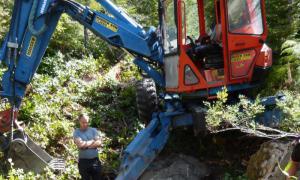Content:
A Canadian fault scientists thought was inactive may actually be capable of producing large-magnitude earthquakes, a new study finds. The results suggest residents of British Columbia on Canada's west coast have a higher risk of experiencing a damaging earthquake than previously thought, according to the study's authors.
The Leech River fault, which extends across the southern tip of Vancouver Island, is part of the Cascadia Subduction Zone, where scientists think there is about a 40 percent chance a megathrust earthquake of 9.0 or more magnitude could occur in the next 50 years, according to the Oregon Office of Emergency Management. Scientists thought the Leech River fault itself was inactive, but the new study shows it produced three surface-rupturing earthquakes in the last 10,000 years with a magnitude greater than 6.5 and is still capable of producing large earthquakes.
The results suggest the part of the Cascadia Subduction Zone running through Canada could contain additional potentially dangerous active faults scientists aren't even aware of yet, according to Kristin Morell, an assistant professor of Earth science at the University of California Santa Barbara and previously at the University of Victoria. Morell is lead author of the new study in Geophysical Research Letters, a journal of the American Geophysical Union.


